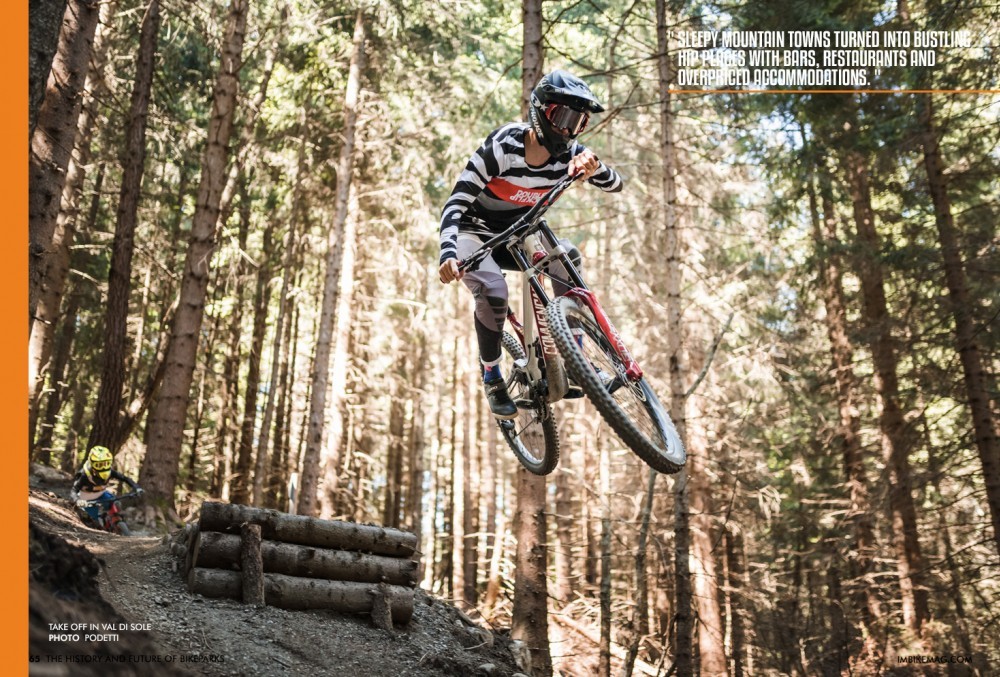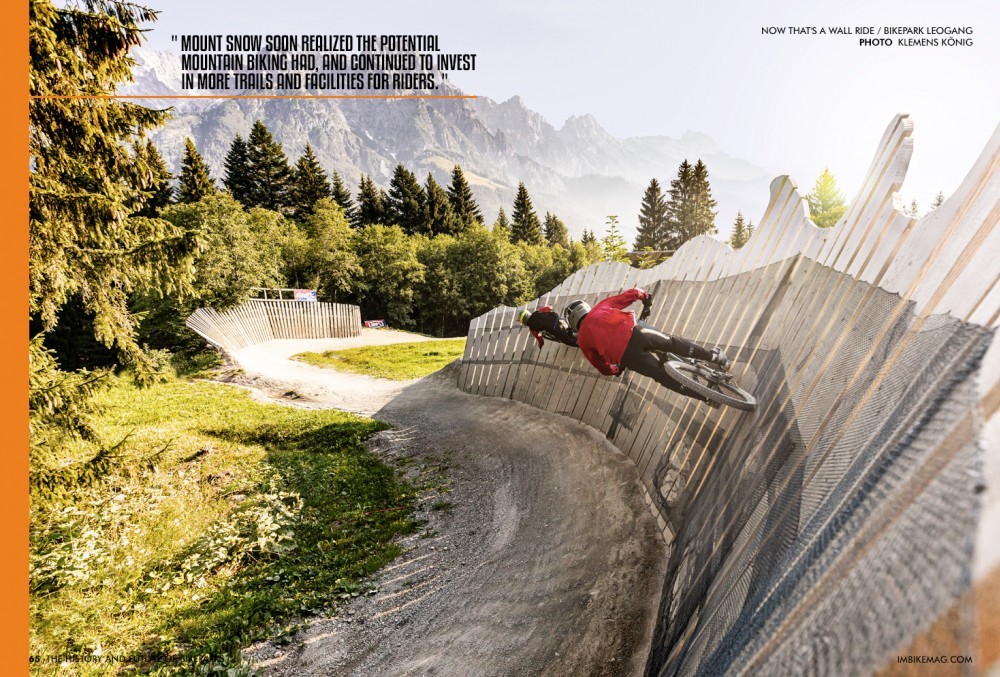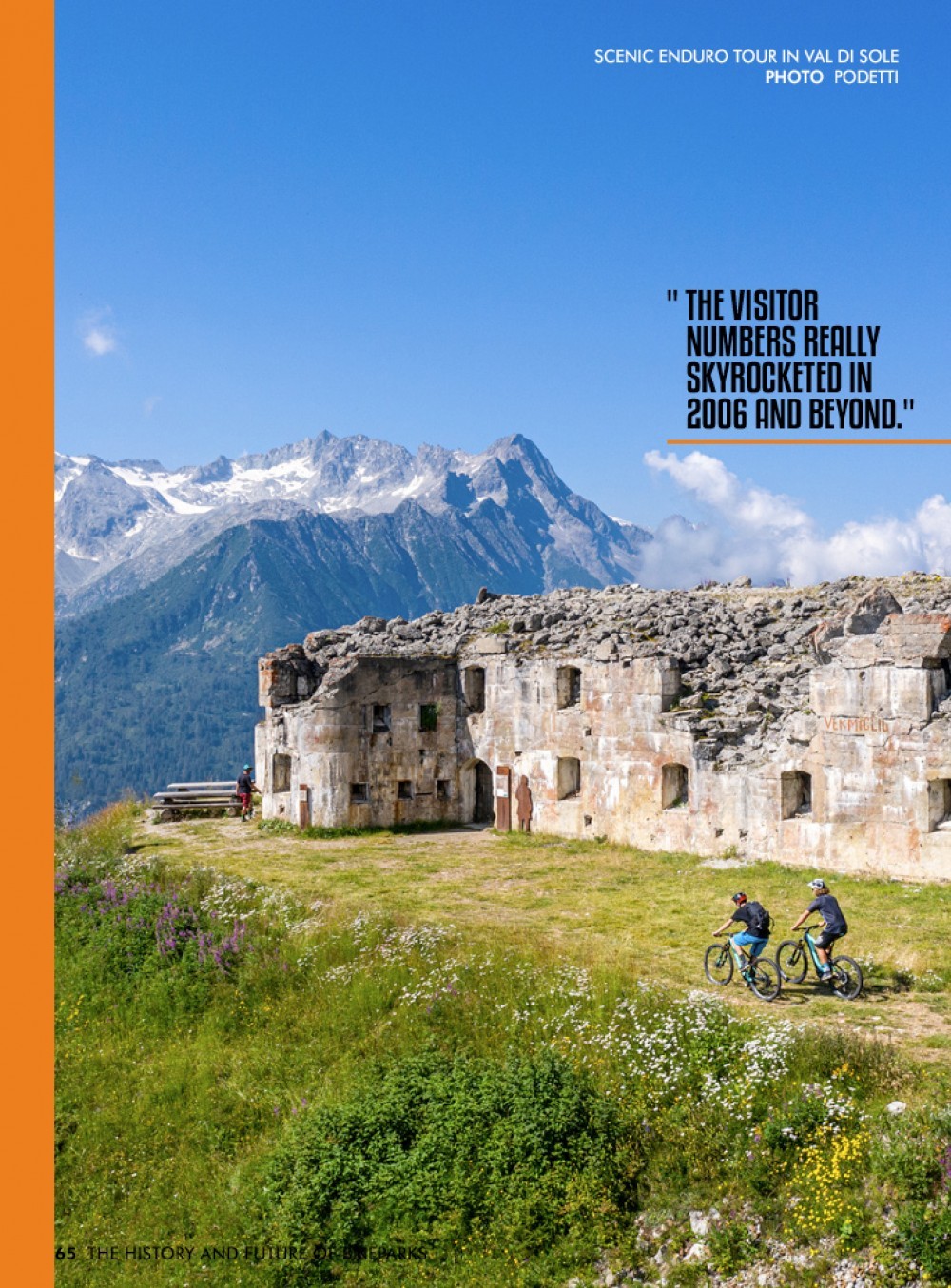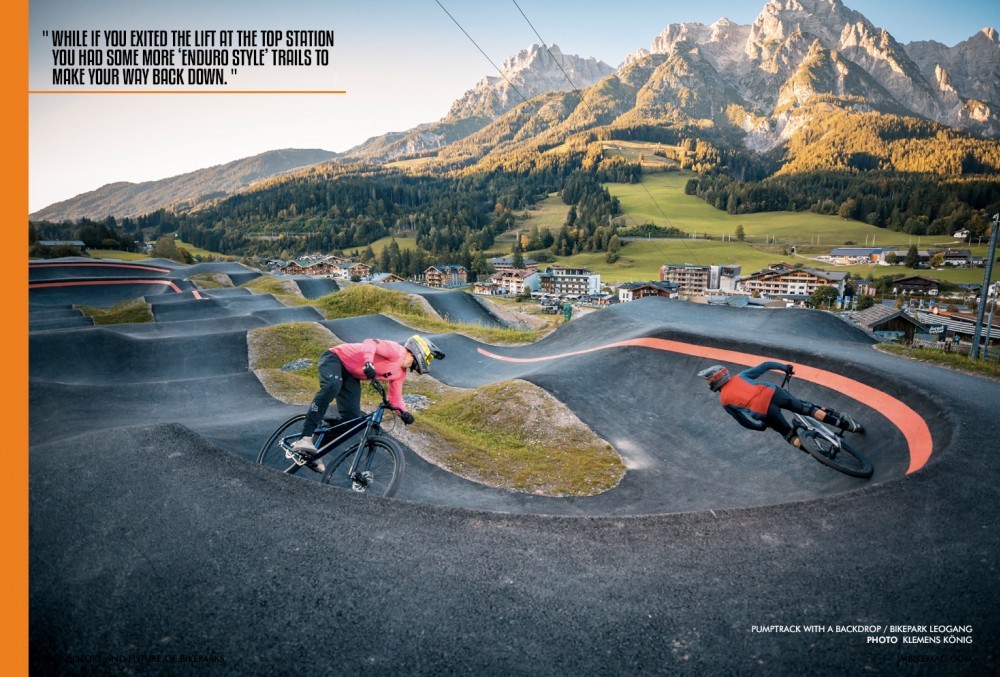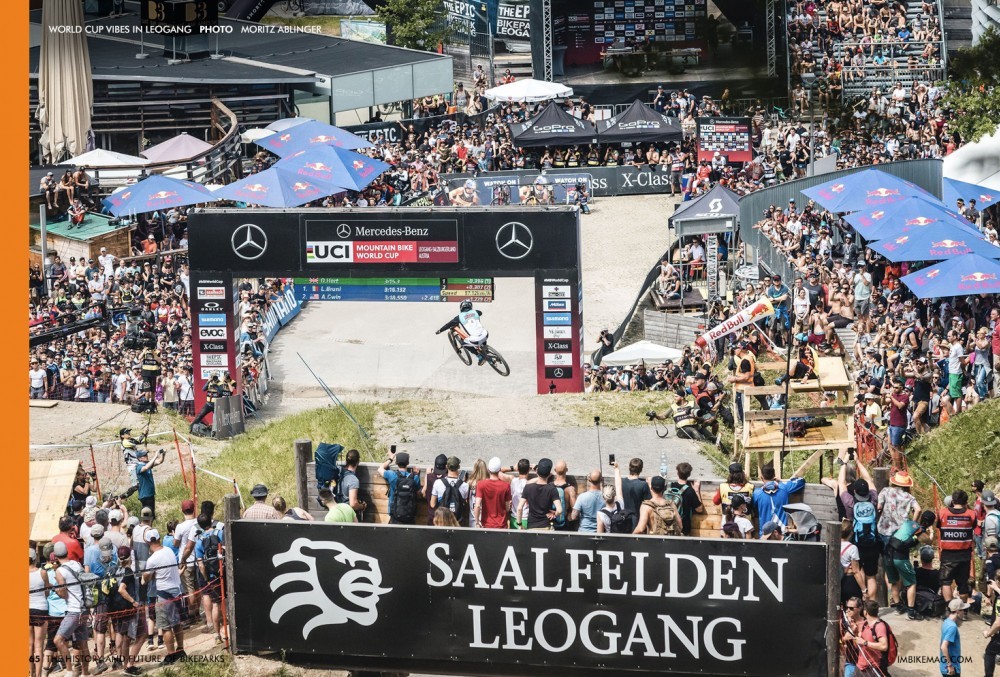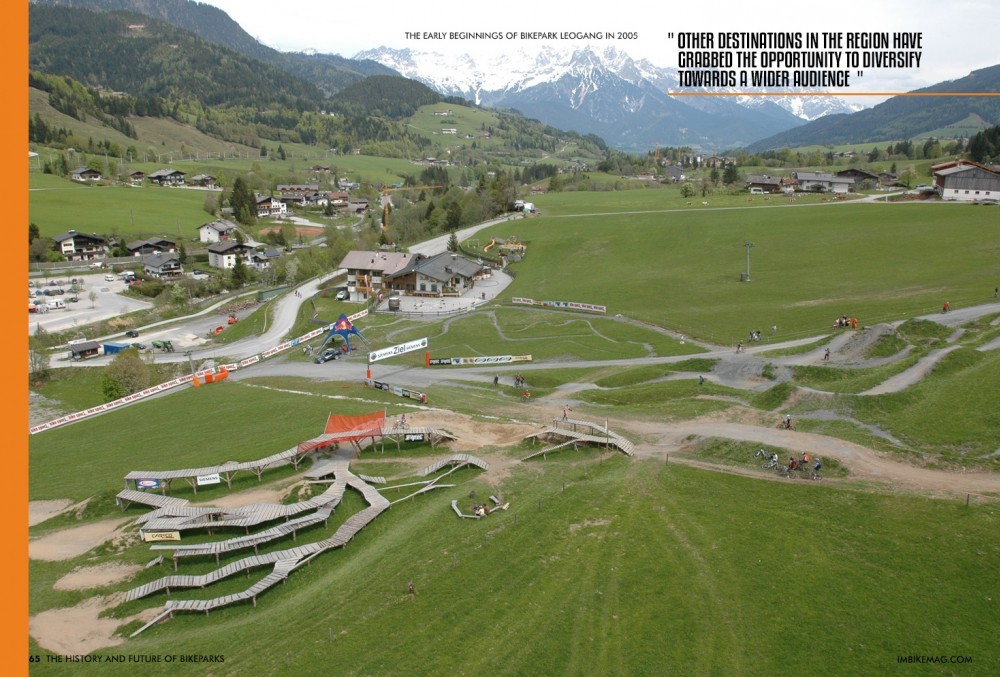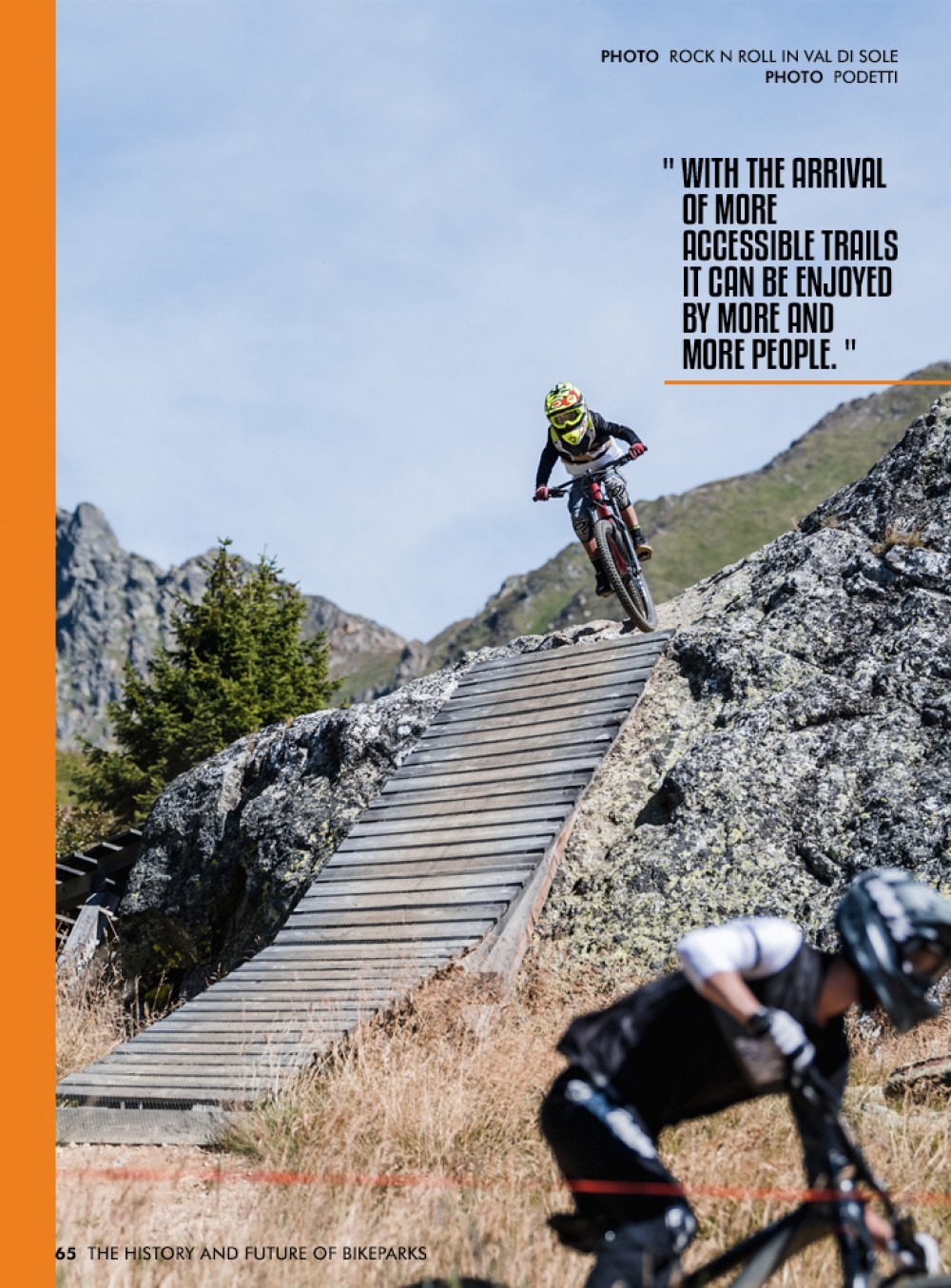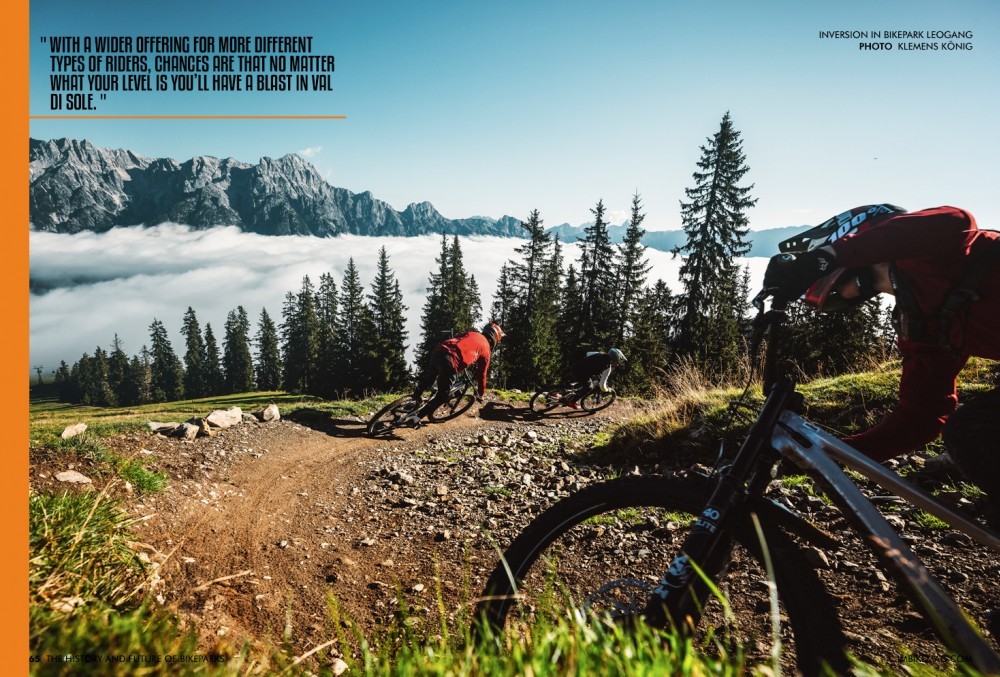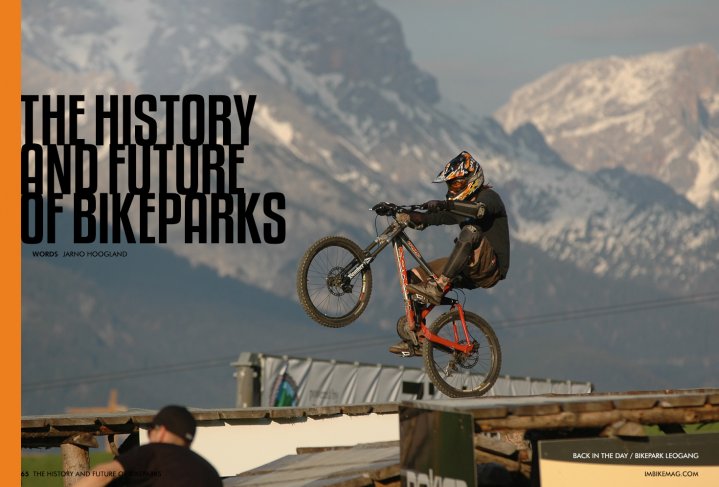
History and Future of Bikeparks
Issue 65 / Tue 1st Jun, 2021
Bikeparks have been around for a few decades now. Where did they come from, how did they develop and what has changed over the years?
One of the great things about mountain biking is that you can enjoy it in so many different ways. From winding forest roads or ancient hiking trails to hand crafted bike trails or professionally built supercross style descents. There is something for everyone.
It hasn’t always been like this though. In the early days of off-road riding, there weren’t any purpose built trails at all. You could stick to the jeep tracks, logging roads and old farm lanes, or for the more adventurous head towards walking paths and hike trails. With the technology of back in the day a big challenge. Remember, no or little suspension, 26’’ wheels, awkward geometry and not to forget rim brakes.
Traditionally speaking mountain towns relied on either the extraction industry or tourism to fuel their economy. Ski lifts changed the landscape forever, in both a physical as well as a figurative sense. Sleepy mountain towns turned into bustling hip places with bars, restaurants and overpriced accommodations. But generally only for a few months of the year, when the temperatures dipped below zero and the peaks were covered in white fluffy snow.
The arrival of this new summer sport also did not go unnoticed by the entrepreneurial folk. The ski lift infrastructure was already in place, and with nothing much to do over the summer months some clever people started to focus on the mountain bikers to boost their summer income. Where in the beginning it was mainly just someone flicking the switch to turn on the chairlift, these days it has become a multi million dollar/euro industry with big investments in trail infrastructure and facilities for two wheeled adventurers.
We checked in with some of the pioneering mountain resorts and bikeparks to see how it all got started, what has changed over the years and where things are headed for the future.
The Origins
First stop on our virtual tour is the East Coast of the US of A. Where the origins of the sport are arguably rooted in Marin county, Mount Snow in Southern Vermont has actually been one of the pioneering destinations with 32 years of lift-accessed mountain biking. Called “the mecca of East Coast mountain biking”, Mount Snow has regularly drawn thousands of competitors and tens of thousands of spectators for big events. That competitive showcase has helped make Mount Snow a premier destination for recreational mountain biking as well. Although it wasn’t always easy to get everyone on the same page, Mount Snow soon realized the potential mountain biking had, and continued to invest in more trails and facilities for riders.
Meanwhile in Europe the biking bug caught on too. The mountain town of Leogang has a long history of skiing and the Leoganger Bergbahnen was founded as early as 1970. This year, the bikepark is celebrating its 20th birthday, making it the oldest bike park in Austria. When the park first opened, there were a total of four lines at the Asitzbahn. The Speedster and the Flying Gangster led from the mid station down to the valley, while the Four Cross and Dual Cross courses were located in the valley area. In the first year, they counted 17000 lift assisted uplifts for the bikers. Popularity rose quickly though, seeing that number rise to 58000 in 2006. Also in Austria the new Bikepark concept raised some eyebrows amongst land owners and locals. After a few meetings and presentations however, various land owners were keen to give it a shot. Growth was small but steady in those early years, but with the help of some big events, good marketing and of course world class trails the visitor numbers really skyrocketed in 2006 and beyond. The technical development of the bikes also played a big role in this, with reliable long travel bikes like the Kona Stab & Stinky hitting the shops for reasonable prices around this time.
On the other side of the main alpine ridge, in the land of pizza, coffee and aperitivoooo Val di Sole was working hard to be on the bucket list for mountain bikers. The main gondola serving the bike park was built in 2007, opening for bikers in the summer of 2008. Although there was not a ‘proper’ bike park yet at the time, the gondola made various existing trails accessible. Three DH style trails led from the mid station back to the valley, while if you exited the lift at the top station you had some more ‘enduro style’ trails to make your way back down. With the paint barely dry on the lift cabins, the UCI World Championships landed in the Italian mountain town in 2008. The track named ‘The Black Snake’ proved to be a proper test for skills and fitness, and saw Gee and Rachel Atherton write history as the first brother and sister combo to become World Champs in the same year.
In terms of getting permission to build it was not up to private landowners to decide. The Val Di Sole tracks lie mainly on community land, but as the trails lie outside of the ski area it did take some convincing to get approval for expansion. With the concept proven and visitor numbers rising each year, 2017 saw the green light for a big investment in the trail infrastructure. New tracks with cool names like ‘Golden Eagle’ and ‘Wild Grizzly’ were being constructed and opened up the mountain to a wider audience. Big berms, jumps and lots of flow make it enjoyable for many, while the ‘Black Snake’ remains there for highly skilled riders.
The Current state of affairs.
In Italy, 2021 will see the return of the UCI World Championships at the end of August. The DH track is still considered one of the most iconic and technical racecourses in the world of mountain biking. But with 3 other tracks, it has plenty to offer for a wide range of riders.
Tourism numbers are expected to grow, and although it is hard to say how many jobs the bike park creates there certainly is a positive impact for the local community. With 9 bike shops, 19 bike rental operations and almost 50 mountain bike hotels the impact is substantial.
When it comes to E-MTB’s, the Italian resort doesn’t see them as a threat to the lift-accessed riding. In the end it will bring more people to mountain biking, and some of the riders that start out on E-MTB’s will move over to enduro or DH machines.
Austrian bike park Leogang notices an increase in E-MTB’s in on their trails, funnily enough they also take the gondola up and ride down the same trails as everyone else. For those who argue that E-MTB’s create more erosion find little support for that theory from Leogang’s maintenance crew. They see no evidence that there is more wear and tear on the trails since the arrival of the E-MTB.
In terms of trails, there have never been more options for riders than in 2021. Combined with the resort of Saalfelden, the Leogang Bikepark offers 11 bike park tracks, 4 singletrails and a whopping 10.000m2 of Bike Playground. With a big variety like this, there are lots of options for all types of riders. When asked how the development of the bikepark affected the job opportunities for the region, the message was clear. The arrival of bike tourism really transformed the region from a winter only destination to a 365 days a year resort. Not only does the park give employment to lift staff, shapers, maintenance crew and guides but it also provides year round jobs in hospitality.
When it comes to tourism, sustainability is always a tricky subject. Travelling is never good for the environment, and cutting tracks through the forest generally doesn’t have a positive impact on wildlife. At the Leogang bike park however, the tracks are always built in coordination with different authorities, keeping the impact of the location and building methods to a minimum. Another measure put in place is a ban on tear-offs. If there is bad weather, bike park visitors get a voucher for a discount on roll offs.
Stateside, Mount Snow has been modernizing it’s trails for the past few years now. Introducing more man made features like jumps, berms and wooden structures to entertain the riders. While maintaining its reputation as a core rider venue, other destinations in the region have grabbed the opportunity to diversify towards a wider audience. Just 45 miles north of Mount Snow lies Okemo Mountain Resort. Their 9 bike trails have been purposely built to accommodate families, beginners and kids, really treating mountain biking as a family affair. “This is the perfect destination for a family that wants to try mountain biking together for the first time,” said Bruce Schmidt, Okemo’s general manager. “We’ll get you set up with the right equipment and point you toward terrain where you can be comfortable and have a great time.”
This family focus also connects with the resort's other offerings like the mountain luge run, disc golf and a pool.
The Future
While the rise of visitors has slowed down in recent times due to Covid, Mount Snow and Okemo are optimistic for the future. Mountain biking is here to stay, and with the arrival of more accessible trails it can be enjoyed by more and more people. Cycling has seen an enormous boom in the past few months, and both resorts are confident these new two wheeled enthusiasts will venture out for new destinations once travel is an option again.
The Italian Val di Sole resort is currently working on opening a whole new bike park in the area, which will be covered by more lifts. Relying on various events to bring attention and visitors to the region, they expect visitor numbers to continue to rise. The summer is still not as busy as the winter season, leaving plenty of room for growth with enough accommodation and restaurants available. With a wider offering for more different types of riders, chances are that no matter what your level is you’ll have a blast in Val di Sole.
When asked what future plans Leogang has, they became quite mysterious. “As one of the world's leading Bikeparks we will always continue to build and improve the destination. At this moment however, we can not go into too much detail yet” was the official answer. To me this sounds like they definitely have some great new trails and features in the pipeline. Maybe EMTB specific uphill trails? An even bigger dirt jump section or longer Enduro trails? Time will tell. Whatever new features they will build, the people will come judging by the 195.000 cable rides for mountain bikers in 2020.
For the moment, we can safely say bikeparks have played a major role in evolving mountain biking as a sport, and summer tourism in general. Transforming sleepy farmers villages into funky mountain destinations and introducing the joy of off-road riding to many people.
For more information on these destinations check out their website:
- https://bikepark.saalfelden-leogang.com/en
- https://www.centrobikevaldisole.com/
- https://www.mountsnow.com/
- https://www.okemo.com
By Jarno Hoogland
Jarno's life has revolved around two wheels ever since he swung a leg over his first BMX at age 4. After a BMX and DH racing career, he moved on to work for bike shops, distributors and brands before ending up in the editors seat at IMB. Based in the ultimate testing ground in the Swiss mountains, he runs his guiding operation and makes sure every IMB issue is filled with top notch content.




